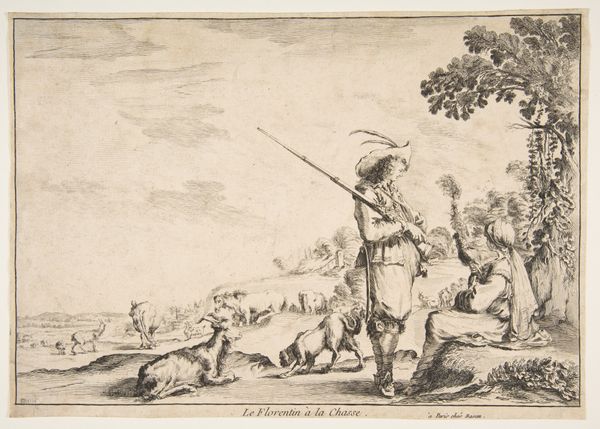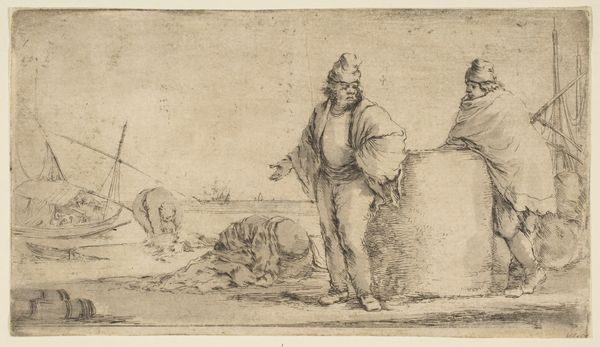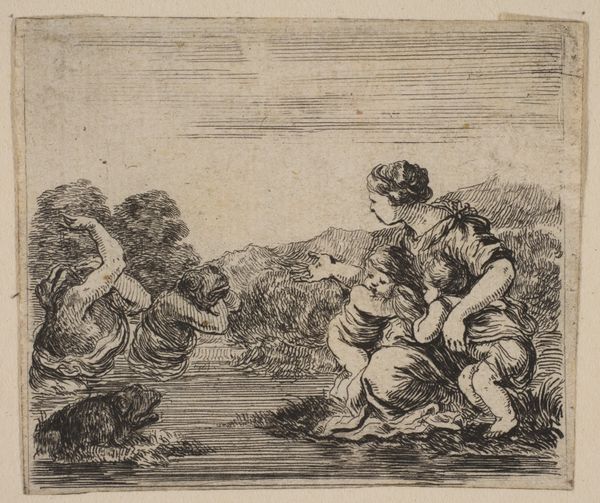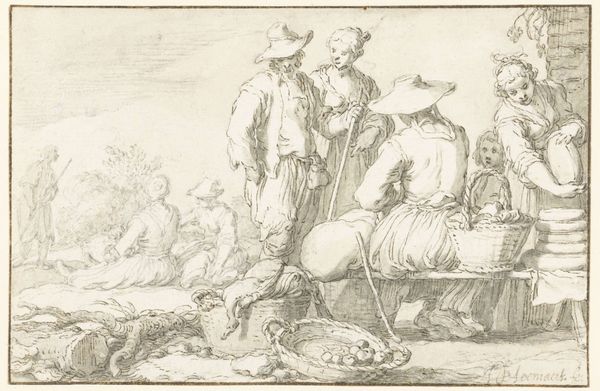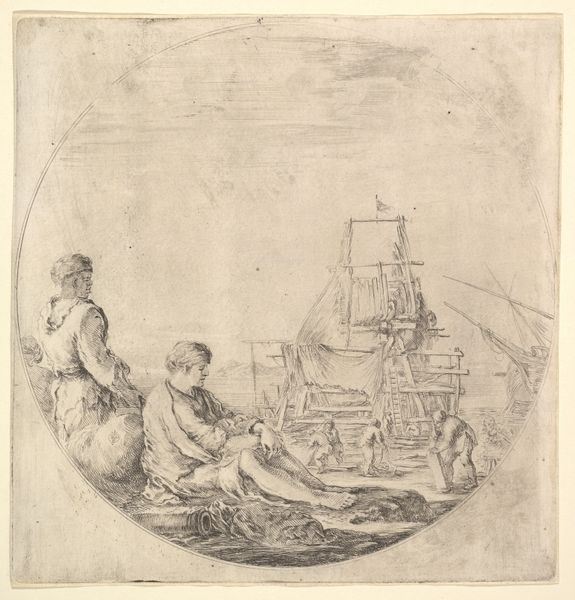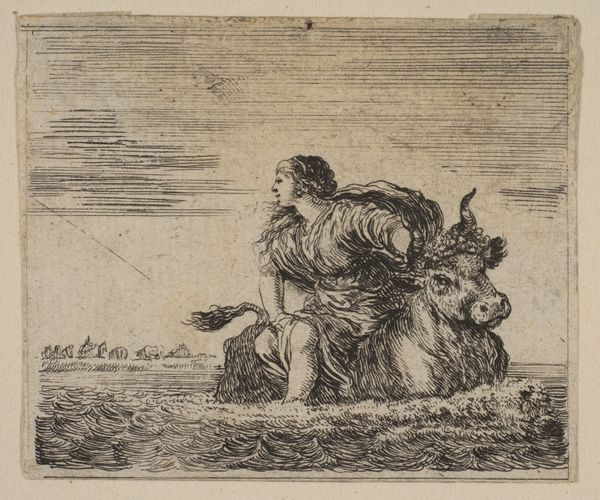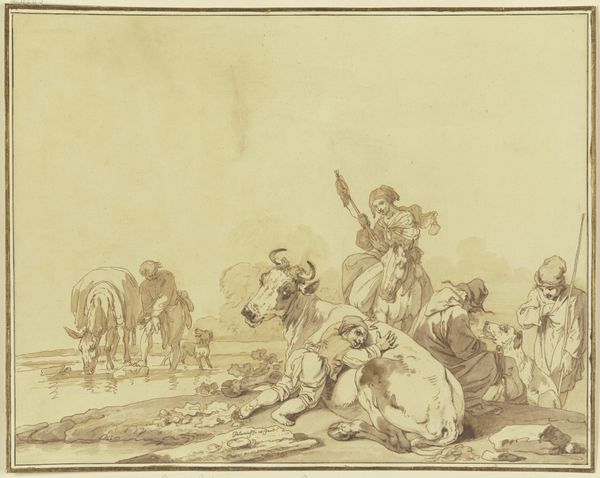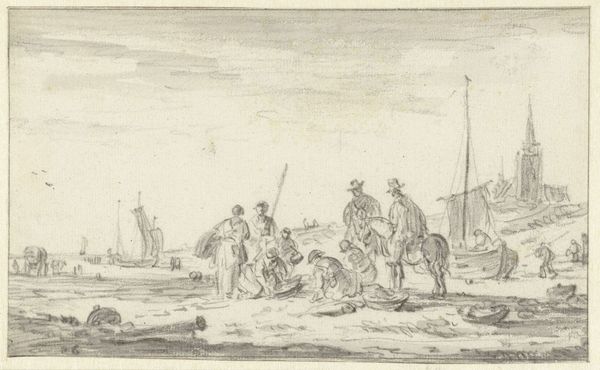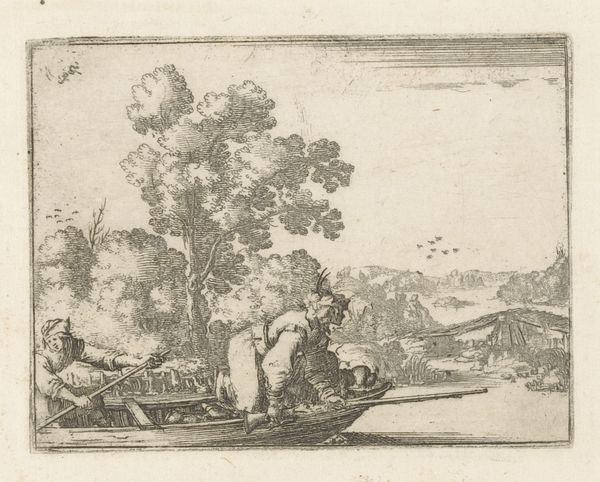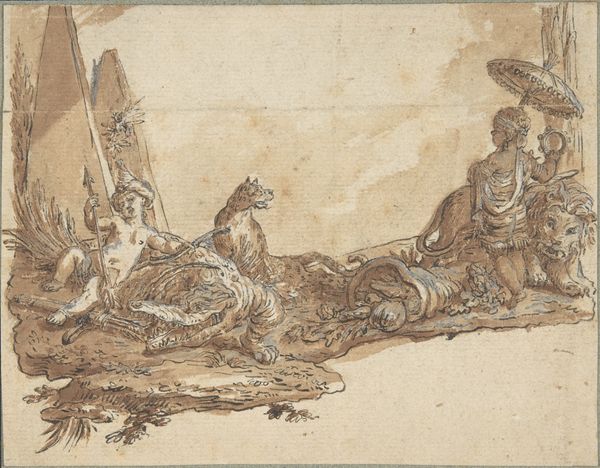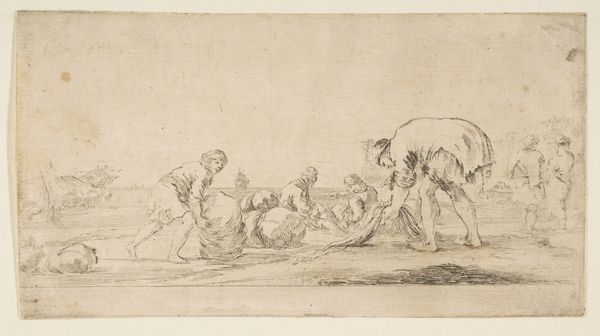
A young sailor and an old man sitting by the sea 1620 - 1664
0:00
0:00
drawing, print, etching
#
drawing
# print
#
etching
#
dog
#
landscape
#
men
#
genre-painting
Dimensions: Sheet: 4 1/16 × 7 1/8 in. (10.3 × 18.1 cm)
Copyright: Public Domain
Curator: Here we have Stefano della Bella’s etching, "A young sailor and an old man sitting by the sea," created sometime between 1620 and 1664. The print depicts several figures in a coastal landscape. Editor: There's something somber about this scene. It is rather small, delicate lines forming a rather harsh environment... You sense a division between figures through body language, their class may even be evident from their appearance. Curator: Well, consider the role of seafaring in the 17th century—it was both a source of livelihood and a perilous endeavor. Perhaps Della Bella is commenting on the transient nature of coastal life and social dynamics. Editor: Notice how the artist employed etching? The control and the repetition. The materiality here interests me, these weren't spontaneously applied lines, but lines of calculated repetition of a plate being worked and re-worked in a very particular material process, quite separate from other mediums like drawing. You see the way his method itself shapes what he conveys. Curator: That's a valid point. The etching medium is able to suggest textures and shadow—a subtle form of chiaroscuro that lends emotional depth to the men's faces and clothing. Look how that dog snuggles right into the boy's side and then how different is that image and level of tenderness than that of the elders who are huddled with much more separation. Editor: I find myself considering the political climate during Della Bella's life. As an artist working for aristocratic patrons and then even for the Medicis in Florence. Curator: Exactly! The historical background becomes crucial. Italy was fragmented then, struggling against colonial ambitions of neighboring powers, so we should be seeing in this artwork the visual negotiations that he had to grapple with at that time to secure financial backing while balancing it with what he saw on the streets. Editor: Indeed, by exploring its making alongside the era, it makes a really interesting way of perceiving social critique within the piece. Curator: By observing that fine balance of process, class tension and the socioeconomic background together really enriched this viewing for me. Editor: Yes, and the exploration of class tensions during the age of production enlivened the landscape's inherent melancholy with a newfound perspective.
Comments
No comments
Be the first to comment and join the conversation on the ultimate creative platform.
